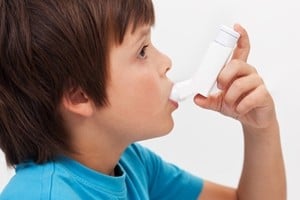
A particularly warm fall caused pollen counts to soar in 2014.
In late October, the Asthma and Allergy Foundation of America (AAFA) released its rankings of the worst cities in the US for fall allergy sufferers. According to Dr. Clifford Bassett, New York allergy and asthma doctor and AAFA representative, 2014 has seen an unusually warm autumn, meaning that more plants were able to pollinate for longer, creating worse conditions than usual for those with allergies and causing poisonous plants like poison ivy to gain toxicity.
The "pollen belt", an area of especially high airborne pollen levels stretching from the Southeast up through the Midwest, had the hardest time of it this year, but the effects of the warm fall weather were felt all across the country, especially in cities. This is due to several factors. For one, cities tend to have a higher percentage of male plants, which are the ones that produce the pollen. Another factor is the accumulation of ozone gas in urban environments, which can exacerbate allergic reactions and asthma by making it difficult to breathe.
Dr. Bassett encourages those of us with allergies to take preemptive action against them: "The key is to be proactive and have an allergy action plan to reduce, prevent and manage symptoms more effectively. This includes allergy testing to identify specific allergic triggers, allowing for better control and more cost effective care."
Here are the ten worst cities for fall allergies according to AAFA:
- Louisville, KY
- Wichita, KS
- Oklahoma City, OK
- Dayton, OH
- McAllen, TX
- Memphis, TN
- Baton Rouge, LA
- Jackson, MS
- Chattanooga, TN
- Tulsa, OK
If you live in any of these cities or other parts of the "pollen belt", a home air purifier can significantly increase your quality of life. Contact US Air Purifiers for advice on managing your seasonal allergies with an air purifier today.